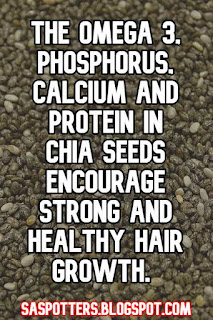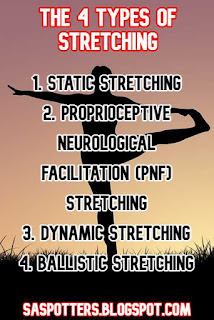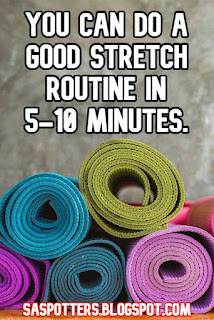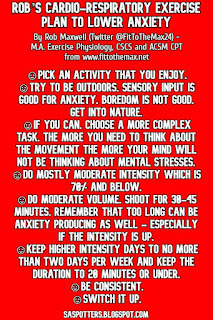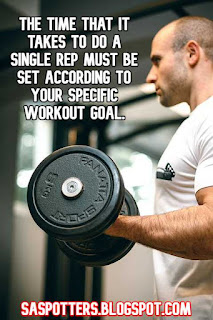This article is written by Rob Maxwell, M.A. Exercise Physiology, CSCS and ACSM CPT from www.fittothemax.net. Follow him on Twitter.
Did you know that there are many variables when you write an exercise prescription for strength training - or any other kind of training?
The answer to that is no - unless you have been training with me
Most people and most trainers just look at what others are doing and copy that workout. There's a problem with that.
There is the principle of specificity and that principle states that to get specific results, you must follow a specific program. Everybody is different.
The variables of strength training
The main variables when building a strength program are the number of sets, reps, load, rest and finally the speed of the actual rep which we call tempo.
1. Sets
2. Reps
3. Load
4. Rest
5. Tempo (speed)
The best strength training variables for muscle stimulation
In the exercise science world, we have answers for all of these.
The most effective set ranges per muscle group are two to five sets.
The rep range can be effective from one all the way up to twenty (for strength and endurance) and even higher for other reasons.
The amount of load is typically 40 to 100% of your repetition maximum (One rep max).
A rest time of thirty seconds to three minutes can be effective.
As you can see, there is a lot of room in-between all these acute variables. For this subject, I focus on the speed of the movement. It is also called tempo.
The importance of speed or tempo during strength training
Tempo is a little bit harder to grasp because there is some subjectivity to it. Unfortunately, it is neglected almost all of the time.
It shouldn't be disregarded because speed matters.
Like a lot of things that we see in the gym, most people just follow what people that look like they are fit are doing. Following a leader can be a mistake if they are not qualified to lead.
At my own gym I will have people ask, “Why are you having him go fast when I’m going slowly?”
That is a good question. I am glad people ask. If your exercise physiologist is telling you to go slow and really feel it, then why is the same guy telling somebody else to go faster?
Does it matter? I will answer that here.
The stages of each rep during strength training
First off, let's get you caught up. There are various parts to a repetition.
The concentric phase of muscle stimulation
There is the 'positive' part of your rep. This is officially called the concentric phase. The concentric phase happens when the muscle fiber is shortening. It is when you are pushing or pulling the load.
The eccentric phase of muscle stimulation
The 'negative' part of your rep is when the muscle fibers lengthen. It is officially called the eccentric contraction. An example would be when you lower your body on a squat.
The negative should always take longer than the positive because the negative contraction is twice as strong. Typically, the negative contraction is twice as long.
The pause or isometric part of muscle stimulation
The final part of the contraction is very subtle, but it is called the pause or the isometric hold. The exact definition is called tension without joint movement. The pause is important. It helps to break the momentum of the exercise.
The 6 second rep
Most experts talk about the six second rep. That is a good place to start.
The six second rep looks like this:
- Two seconds on the positive
- One second on the pause
- Three seconds on the negative
This is a moderately slow rep. It is a good rep because you will stay very controlled.
Now that we have a baseline on how long a rep takes, let's look at how they are classified.
Different rep speeds for weight training
Standard reps (4-6 seconds)
Four to six second reps are a suitable place to start. They are best for keeping the loads controlled and they will work on both strength and endurance.
Fast reps (under 2 seconds)
Anything under two seconds is considered a fast rep.
Slow reps (6-8 seconds)
Six to eight second reps are considered slow reps.
Super slow reps (above 10 seconds)
Reps that take above ten seconds are considered super slow. There is an entire ideology on Super Slow Reps.
We need to focus on repetition timing
Why are there differences? Form matters.
It really bugs me when trainers talk about sets, reps, and loads but they don't tell you about tempo or how fast you should go.
I am not big into timing each rep to the second, but sticking to a certain range is important.
You will not find a significant difference between a four second rep and six second rep. The difference between that and a two second rep, though, is huge.
Focus on the best rep timing to suit your goals.
Rep timing for beginners
In the beginning, we always teach a moderate rep speed of four to six seconds.
We want the client to really control the weight and avoid using momentum (swinging the weights around so that muscles aren't actually moving the weight).
Time under load (TUL) or time under tension (TUT)
TUL stands for Time under Load. TUT stands for Time under Tension. They are the same thing.
TUL refers to how long the muscle resists against a force (like a weight or your body weight).
People should aim for a longer TUL. This is the stimulation that stimulates the muscle to grow.
The longer the rep takes, the more the muscle will be stimulated. This matters greatly.
We say at the gym all the time, “If it’s burning, it’s working.” That is true.
The burn that you feel is lactic acid. It is the byproduct of anaerobic (non-cardio) exercise. Your muscles are getting enough stimuli to break down and repair when you feel this burn.
This moderate rep range (4-6 seconds per rep) is best for building strength and muscular endurance.
The forced velocity curve
There is something called The Forced Velocity Curve. The FVC states that load and speed are inversely related.
In other words the heavier a load is, the slower it will take to lift. That makes sense, right?
Think about when you see a power-lifter struggling with a Max Bench Press. It might take power lifters ten seconds to finally lift the load all the way up and you think that they are going to bust a hernia along the way!
We take this into account. This means that when you are trying to build strength, like most people are, it is fine to lift slowly. It also says that once a load gets heavy you have no choice but to slow down.
Going at this speed four to six seconds also keeps momentum out of the set and reps - that's a good thing.
Most people lift weights to protect themselves from getting injured (during sports or in general living).
This tempo almost guarantees that you will not get hurt, but that you will get stronger instead.
One of my pet peeves is when I hear people say that they think they will get hurt by lifting weights. That is really nonsense and totally within their control. We lift, in part, to keep our body strong so that we can continue to move.
Along the same lines I hear people state that they are afraid to go heaver because they are afraid to get hurt. Well, think about what I said about the Forced Velocity Curve. The heavier the load, the slower you will go.
Guess what? It is speed that is more correlated to injury in a gym than load (heaviness). Going ballistic and not going heavier is more likely to get you injured.
Can you get hurt maxing out like a power lifter? Of course you can - because you get stuck and cannot move the load. Why would you do that unless you are a competitive weightlifter or have a specific sport goal?
Heavier does not mean heavy. It might feel heavy to you. Load is very subjective.
Going slower than the 4-6 sec moderate speed range
What about slower than the four to six second rep? What good does that do?
I do not use that tempo a lot, but there is some good in it.
I will use it if I have a client that has really terrible form and I need to slow them down. We will have some clients that race through a set like they cannot wait to leave. That is mindless and not effective. I will slow them down dramatically so that they will have a more controlled form when we get back to a normal tempo.
Another reason to use it would be for greater TUL- time under load. If you really want a person to feel the set and learn to feel what fatigue feels like, it is a useful tool.
Super slow rep tempos
Some really get into super slow protocols.
What I have found with those is the anaerobic cost is deep. This means that it is really, really fatiguing on the hormonal system and could cause hormonal imbalances.
It really burns and produces quite a bit of lactate (lactic acid). That is good but, like anything, it can become detrimental.
Time is also a big factor. When you start getting into super slow sets it really takes a long time. You could shorten it, but you may have to cut out too many good exercises to do that.
Or you may have all day to spend at the gym. Most do not.
Faster reps
What about going faster? What are the rewards, coach?
Again, faster is defined as two seconds or less per rep.
The four main adaptions of resistance training
1. Hypertrophy (size)
2. Strength
3. Endurance
4. Power
There are four main adaptations that we get out of resistance training. These adaptations are: Hypertrophy (muscle tissue enlargement), Strength, Endurance, and Power.
When we go slower, we can work on all of these but power.
When you want/need power, you need to train with speed.
There is a saying in sports: Train slow, move slow.
You often see guys that play sports working on maximal strength in the gym.
That is okay for a certain part of their training, but if that is all that they do and they don't transition into faster movements, they will not be training specifically for their sport.
Let us look at football. Many people say that football players are strong - and they are.
But what they need is power, right?
Power is defined as force (load) times distance (range of motion) divided by time (how long it takes). It's about how much force you can provide in the shortest amount of time - over the longest range of distance.
That is what football players need, right?
When they get the ball from the QB; they better move that big, strong body quick - or they will be a big, strong body getting dumped and tackled.
Power is what many sports need. When I work with many athletes I work on power.
We do not start with power. Power can be riskier. We start with size to build a foundation. After that we build strength and then transition to power.
Power reps tend to be more specific and faster than fast reps.
We call reps at this speed an explosive pace.
We still go slower on the negative. There is never really a reason to go as fast as you can on the negative. That is just being mindless.
Faster reps work well with tempo
Another reason to go faster (not ballistic) is for tempo.
You can match up the negative and positive phases with your breath. In this case, it is better to go a little faster.
How fast should you lift? That depends.
I like to tell people to go as fast as they can but still control it. That takes focus and we need focus.
A lot of bodybuilders will use this tempo because they can get into a good rhythm and get a great pump (blood volume into a specific muscle).
Explosive sets are great for power and athletes. Faster sets are good for breathing, tempo and time.
I typically prescribe moderately slow reps (four to six seconds) and faster (two to four seconds) for almost everyone besides power athletes once they have built a foundation of strength and size.
I hope that this clears up your issues with rep speed.
Speed matters. The bottom line is to always stay in control and be mindful.
Even the athletes that do explosive reps have some semblance of control. They don't just mindlessly fling the weight. If they do, they are doing it wrong.
Go faster if you are working on tempo and power. Go slower if you are trying to build strength and endurance. Find what works for you.
It is perfectly okay to do different tempos on different exercises and different tempos on the same exercise but for different sets.
I will often have my clients go moderately slow on a main set and then have them do some fast reps once they have hit fatigue after a brief rest. Playing with tempos will help you get more out of your workout.
This article is written by Rob Maxwell, M.A. Exercise Physiology, CSCS and ACSM CPT from www.fittothemax.net. Follow him on Twitter.




















